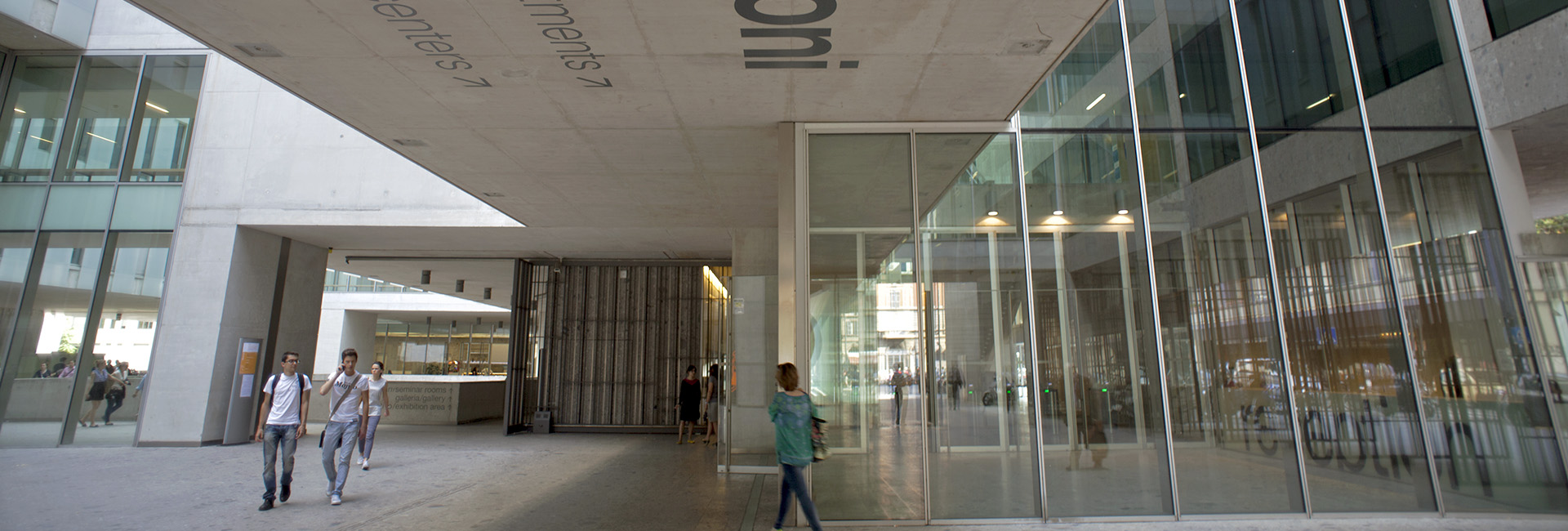20355 - MATHEMATICS - PREPARATORY COURSE
Course taught in English
Class-group lessons delivered on campus
For a fruitful and effective learning experience, it is recommended a preliminary knowledge of basic calculus (limits, derivatives, integrals), of vector spaces, of linear maps and of matrix calculus.
Deep familiarity with some topics generally carried out in the first-level courses in Mathematics is essential for a good understanding of the contents of the Advanced Mathematics for Economics and Social Sciences Course. These arguments are practically and theoretically reviewed along the preparatory Course, combining the analytical approach to the geometrical aspects and focusing on the economic interpretation.
Linear algebra:
- Euclidean spaces: geometric and algebraic approaches. Vectors in R^n. Operations with vectors. Matrices. Linear Space: linear dependance and independance. Dimension and bases of the linear space. Examples. Straight lines and planes in R^3. Linear systems: structure of solutions. Linear functions between euclidean spaces. Representation theorem. Eigenvalues and eigenvectors of a linear transformation. Spectral theorem for symmetric matrices.
Quadratic forms:
- Definitions and applications. Examples.
Curves in the plane and in the space:
- Straight lines in space. Parametric representation of a trajectory. Speed and tangent vector.
Functions in several variables:
- Level lines and contour map. Partial derivatives, gradient. Differential. Higher order derivatives. Derivative of a composite function. Hessian matrix. Implicit functions. Implicit function theorem. Jacobian matrix.
Optimization problems:
- Unconstrained optimization. The first order sufficient conditions. Fermat's theorem. Taylor polynomial of order two. Concavity and convexity. Second order sufficient conditions. Local-global theorem. Constrained oprimization. Lagrange multipliers technique. Meaning of multipliers.
At the end of the course student will be able to...
— Carry out a formal mathematical proof.
— Recognize the abstract mathematical structures that underlie modern economic theories.
— Master operations on functions and vectors.
At the end of the course student will be able to...
— Apply to economics and to the social sciences the basics of mathematics.
— Work out both the quantitative and the qualitative perspectives.
- Face-to-face lectures
- Exercises (exercises, database, software etc.)
Face to face lessons have the aim of involving students in a rapid and effective review course.
| Continuous assessment | Partial exams | General exam | |
|---|---|---|---|
| x |
This preparatory course does not include a final exam. A continuous assessment is carried out stimulating the students’ engagement during face to face lectures.
Lecture notes
Class-group lessons delivered on campus
For a fruitful and effective learning experience, it is recommended a preliminary knowledge of basic calculus (limits, derivatives, integrals), of vector spaces, of linear maps and of matrix calculus.
Deep familiarity with some topics generally carried out in the first-level courses in Mathematics is essential for a good understanding of the contents of the Advanced Mathematics for Economics and Social Sciences Course. These arguments are practically and theoretically reviewed along the preparatory Course, combining the analytical approach to the geometrical aspects and focusing on the economic interpretation.
Linear algebra:
- Euclidean spaces: geometric and algebraic approaches. Vectors in R^n. Operations with vectors. Matrices. Linear Space: linear dependance and independance. Dimension and bases of the linear space. Examples. Straight lines and planes in R^3. Linear systems: structure of solutions. Linear functions between euclidean spaces. Representation theorem. Eigenvalues and eigenvectors of a linear transformation. Spectral theorem for symmetric matrices.
Quadratic forms:
- Definitions and applications. Examples.
Curves in the plane and in the space:
- Straight lines in space. Parametric representation of a trajectory. Speed and tangent vector.
Functions in several variables:
- Level lines and contour map. Partial derivatives, gradient. Differential. Higher order derivatives. Derivative of a composite function. Hessian matrix. Implicit functions. Implicit function theorem. Jacobian matrix.
Optimization problems:
- Unconstrained optimization. The first order sufficient conditions. Fermat's theorem. Taylor polynomial of order two. Concavity and convexity. Second order sufficient conditions. Local-global theorem. Constrained oprimization. Lagrange multipliers technique. Meaning of multipliers.
At the end of the course student will be able to...
— Carry out a formal mathematical proof.
— Recognize the abstract mathematical structures that underlie modern economic theories.
— Master operations on functions and vectors.
At the end of the course student will be able to...
— Apply to economics and to the social sciences the basics of mathematics.
— Work out both the quantitative and the qualitative perspectives.
- Face-to-face lectures
Face to face lessons have the aim of involving students in a rapid and effective review course.
| Continuous assessment | Partial exams | General exam | |
|---|---|---|---|
| x |
This preparatory course does not include a final exam. A continuous assessment is carried out stimulating the students’ engagement during face to face lectures.
Lecture notes





